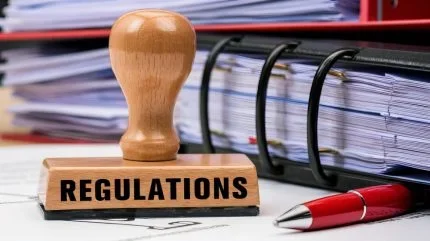With the rise of stringent environmental regulations, the packaging industry faces a significant challenge in adapting to new standards.

The packaging industry is at a crossroads. As environmental concerns and sustainability efforts gain momentum globally, the sector faces mounting pressure to adapt to a landscape defined by evolving regulations.
For businesses in this industry, staying ahead means not only complying with these changes but also innovating to meet future demands.
This article explores how the packaging industry can navigate this complex terrain.
Understanding the regulatory landscape
In recent years, governments around the world have introduced stringent regulations aimed at reducing plastic waste and promoting sustainable practices.
In the UK, for instance, the Plastic Packaging Tax, introduced in April 2022, charges manufacturers and importers £200 per tonne of plastic packaging that contains less than 30% recycled content.
See Also:
- Graphic Packaging reports net income of $190m for Q2 2024
- Zeus Packaging steps up sustainability with net-zero pledge
This policy aims to incentivise the use of recycled materials and minimise waste.
We are confident about the unique quality of our Company Profiles. However, we want you to make the most beneficial decision for your business, so we offer a free sample that you can download by submitting the below formBy GlobalDataSubmit
Similarly, the European Union’s Single-Use Plastics Directive, implemented in July 2021, bans certain single-use plastic products like straws, cutlery, and plates.
The directive also mandates that plastic bottles must contain at least 25% recycled plastic by 2025. These regulations reflect a broader trend towards circular economy principles, where the focus is on designing out waste and keeping materials in use for as long as possible.
For the packaging industry, this means a significant shift in how products are designed, produced, and disposed of.
Companies must now consider the entire lifecycle of their packaging, from sourcing sustainable materials to ensuring recyclability at the end of its use.
Innovation in sustainable materials
One of the most effective ways the packaging industry can adapt to changing regulations is through innovation in sustainable materials.
Traditional plastics, which are derived from fossil fuels, are a major contributor to environmental pollution. To mitigate this, companies are exploring alternatives that are both eco-friendly and compliant with new regulations.
Biodegradable and compostable materials, such as polylactic acid (PLA) derived from corn starch, are gaining traction. These materials break down naturally in the environment, reducing the burden on landfills and oceans.
Additionally, advancements in plant-based packaging, such as those made from seaweed or agricultural waste, offer promising solutions for the future.
Another area of innovation is in the development of recyclable materials. For example, companies are working on creating packaging that is easier to recycle by using mono-materials, which are made from a single type of plastic.
This simplifies the recycling process and increases the likelihood that the packaging will be properly processed and reused.
Embracing circular economy practices
Adopting circular economy practices is crucial for the packaging industry to thrive under new regulations. This approach focuses on designing products with their end-of-life in mind, ensuring that materials can be recovered and reused rather than discarded.
One key strategy is to implement design for disassembly. This involves creating packaging that can be easily taken apart, allowing the different components to be recycled separately.
For example, a bottle with a detachable label and cap made from different materials can be more effectively recycled if these parts can be easily separated.
Extended producer responsibility (EPR) schemes are also becoming more prevalent. These programmes make manufacturers responsible for the entire lifecycle of their products, including take-back, recycling, and final disposal.
By participating in EPR schemes, companies can demonstrate their commitment to sustainability and compliance with regulations.
Furthermore, investing in recycling infrastructure and technology is essential. Advanced sorting and processing facilities can improve the efficiency and effectiveness of recycling operations, ensuring that more materials are recovered and reused.
Collaborating with governments and other stakeholders to develop these facilities can also help companies stay ahead of regulatory requirements.
Consumer education and engagement
Finally, consumer education and engagement play a vital role in the packaging industry’s adaptation to changing regulations. Consumers are becoming increasingly aware of environmental issues and are demanding more sustainable packaging options.
By educating consumers about the importance of recycling and the benefits of sustainable packaging, companies can foster a culture of responsibility and participation.
Clear labelling and communication are essential. Packaging should include easy-to-understand recycling instructions, indicating whether it is recyclable, compostable, or biodegradable.
This helps consumers make informed decisions and encourages them to dispose of packaging correctly.
Moreover, companies can leverage digital tools and platforms to engage with consumers. Social media campaigns, interactive websites, and mobile apps can provide valuable information and encourage sustainable practices.
For instance, apps that allow consumers to scan barcodes to check recyclability or find nearby recycling centres can significantly enhance participation in recycling programmes.
The takeaway
The packaging industry stands at a pivotal moment as it confronts changing regulations aimed at fostering sustainability.
By innovating with sustainable materials, embracing circular economy practices, and engaging with consumers, the industry can not only comply with new regulations but also lead the way in creating a more sustainable future.
As businesses navigate this evolving landscape, those that prioritise adaptability and sustainability will be best positioned for long-term success.
Source from Packaging Gateway
Disclaimer: The information set forth above is provided by packaging-gateway.com independently of Chovm.com. Chovm.com makes no representation and warranties as to the quality and reliability of the seller and products. Chovm.com expressly disclaims any liability for breaches pertaining to the copyright of content.




